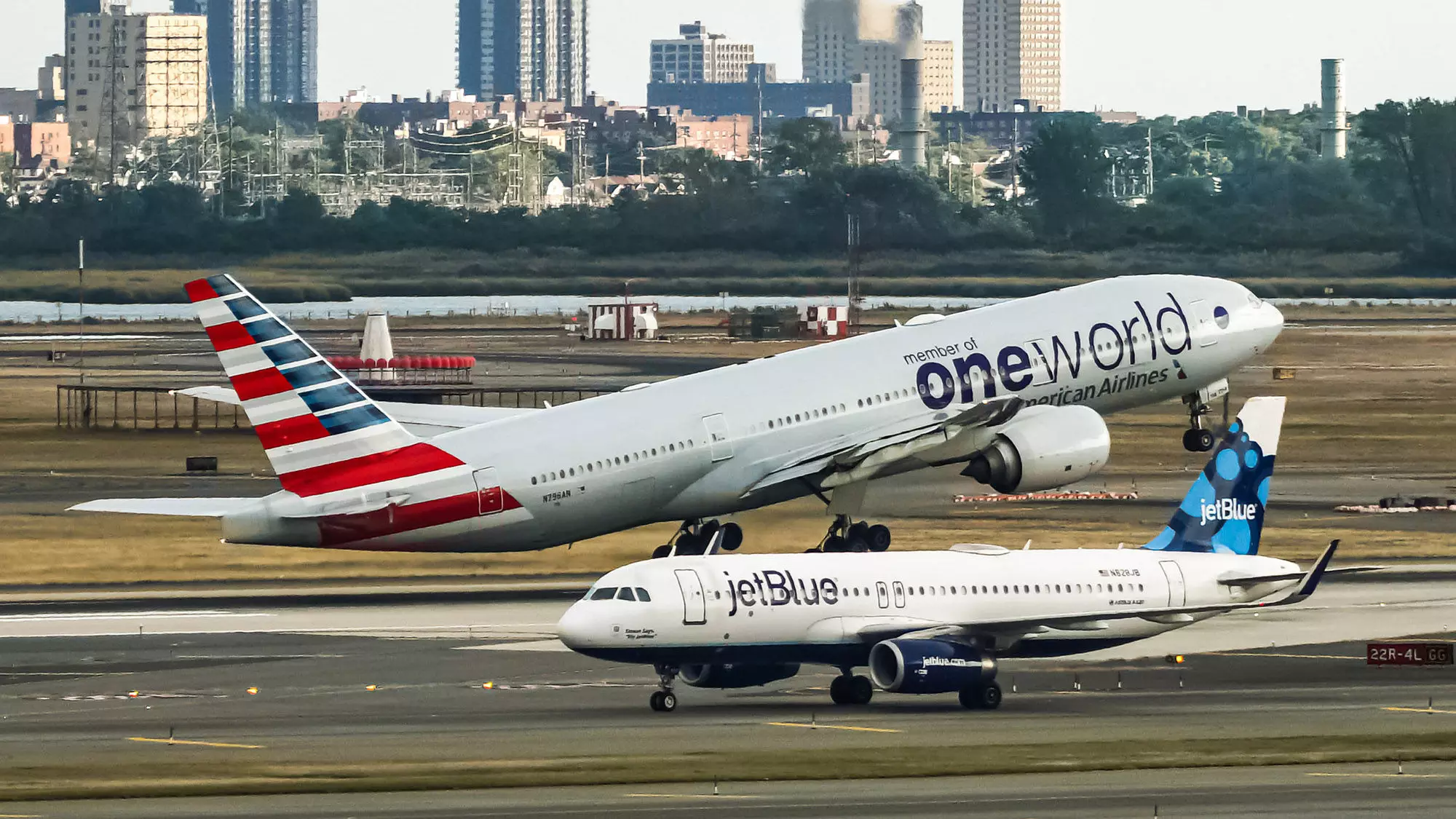The aviation industry is no stranger to fluctuating alliances and strategic partnerships, but few have experienced such a rapid rise and fall as the Northeast Alliance (NEA) between American Airlines and JetBlue. Initially announced in July 2020, this partnership aimed to enhance operations across key airports in Boston and the New York area, promising to create a traveler’s haven amid increasing competition and market complexities. However, the alliance soon came under scrutiny not just from the market but also from regulatory entities, prompting a legal saga that culminated in an explosive lawsuit on Monday.
American Airlines filed a lawsuit seeking over $1 million from JetBlue, citing disputes over payments tied to the NEA’s revenue-sharing agreement. This turn of events marks a significant breakdown in what was once heralded as a transformative partnership. The partnership promised synergies that could redefine how airlines operated in the crowded Northeast corridor but has now descended into a quagmire of legal confrontations and public disputes.
Legal Turmoil and Antitrust Scrutiny
The partnership’s downfall was accelerated by legal challenges, particularly the antitrust lawsuit brought forth by the U.S. Department of Justice, several states, and the District of Columbia. Late 2021 marked a pivotal moment when these parties argued that the NEA could stifle competition rather than foster it. Fast forward to May 2023, a ruling by Judge Leo Sorokin determined that the NEA was indeed in violation of the Sherman Antitrust Act, leading to the mandated dissolution of the alliance.
Many in the industry saw these legal hurdles as inevitable, given the increasing focus on anti-competitive behavior in various sectors. The fact that JetBlue executives had claimed profitability from the partnership just months before its demise underscores the complex nature of business relationships in aviation. Profitability does not necessarily equate to longevity, especially when regulatory bodies intervene.
Revenue Disputes and the Mutual Growth Incentive Agreement
At the heart of the legal conflict lies the Mutual Growth Incentive Agreement (MGIA), which aimed to share the financial benefits of their alliance. American claims that this agreement was valid until mid-July 2023 and that they had consistently billed JetBlue for its share of the revenues generated. Yet, the relationship soured when JetBlue’s calculations of its financial obligations differed from those of American by a critical 6%. This discrepancy has been cited in American’s filings as a failure on JetBlue’s part to comply with their agreed-upon terms.
The operational complexities of partnerships like NEA cannot be understated; they require precise coordination and transparency—qualities that seem to have faltered in this case. American’s frustration is palpable as they navigate a situation that threatens to muddy their reputation and financial standing. For JetBlue, the refusal to settle payments raises questions about their financial strategy and future commitments to partnerships.
The Strained Relationship and Future Prospects
Despite the unfolding drama, American Airlines appeared willing to salvage their relationship with JetBlue. In a memo from Vice Chair and Chief Strategy Officer Steve Johnson, it was disclosed that discussions were ongoing to renew the partnership. However, negotiations fell apart, highlighting the challenges of aligning operational goals and financial metrics in a post-court ruling landscape. The memo pointedly articulated that the parties could not find a framework that made sense, signaling a considerable shift in strategic focus for both companies.
The resignation on JetBlue’s part, as indicated by CEO Joanna Geraghty’s comments during a recent earnings call, suggests an unwillingness to engage in further conflicts—an indication that they may be preparing to step back from aggressive partnership maneuvers. This situation poses intriguing questions about the future of airline partnerships in America, especially in a climate where shareholder value and operational efficiency often clash.
The Industry’s Broader Implications
This legal battle between two major airlines serves as a cautionary tale for others within the industry. The consequences of a failed partnership extend beyond the immediate financial implications; they threaten the stability and coherence of competitive strategies among airlines. As market dynamics continue to evolve, players in the aviation arena must evaluate both the opportunities and possible pitfalls associated with such alliances. As American Airlines and JetBlue find themselves at an inflection point, their experience underscores an essential lesson for every airline: in the game of strategic partnerships, clarity and mutual benefit are paramount. The NEA was once seen as a potential beacon for future collaborations, but its downfall illustrates that even the most promising alliances can quickly unravel when fundamental differences arise.


Napsat komentář